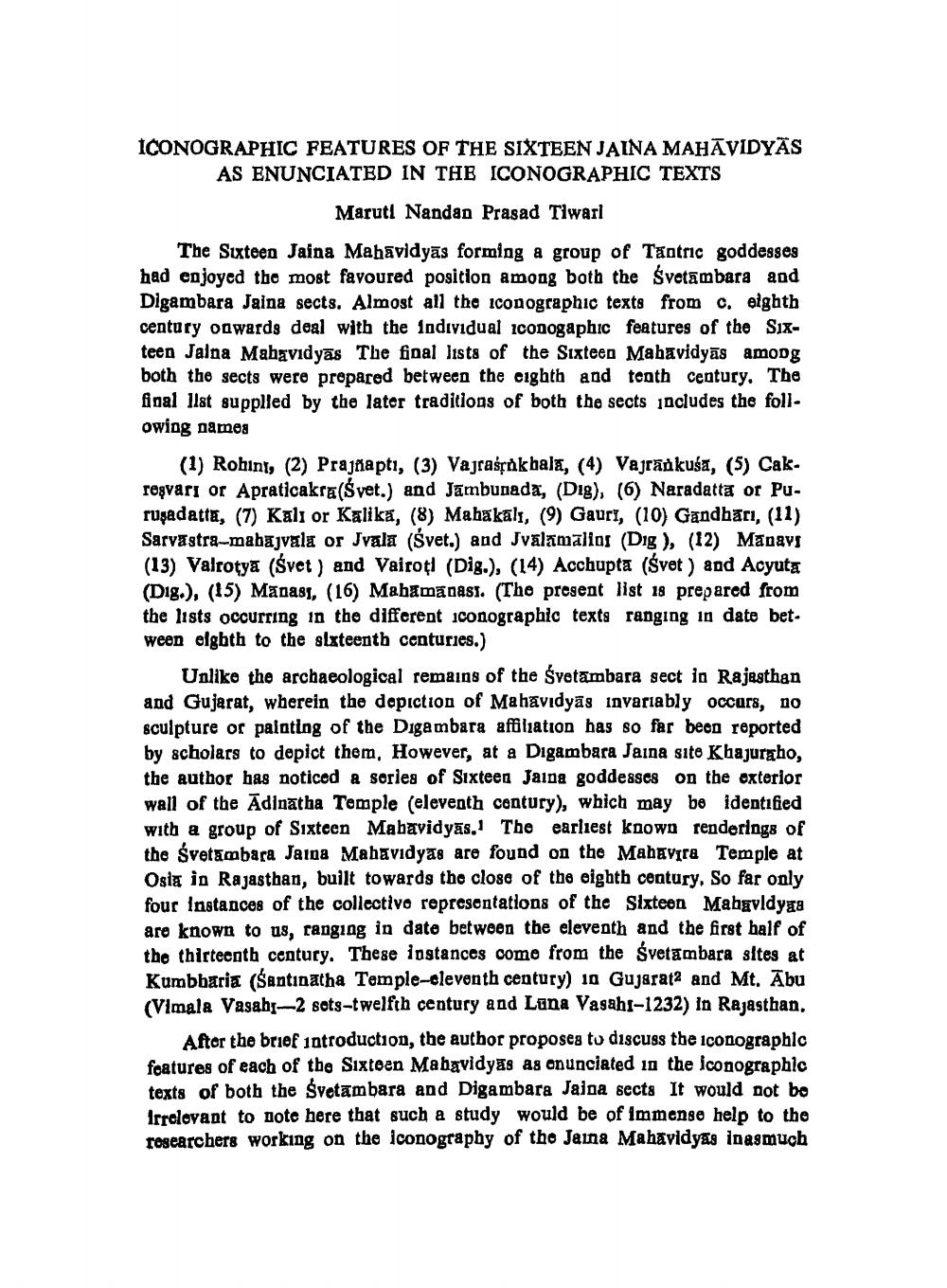________________
ICONOGRAPHIC FEATURES OF THE SIXTEEN JAINA MAHAVIDYAS
AS ENUNCIATED IN THE ICONOGRAPHIC TEXTS
Maruti Nandan Prasad Tiwari The Sixteen Jaina Mahavidyās forming a group of Tantric goddesses had enjoyed the most favoured position among both the Svetambara and Digambara Jaina sects. Almost all the iconographic texts from c. eighth century onwards deal with the individual iconogaphic features of the Sixteen Jalna Mahavidyas The foal lists of the Sixteen Mahavidyās among both the sects were prepared between the eighth and teath century. The final llat supplled by the later traditions of both the sects includes the following names
(1) Rohint, (2) Prajnapti, (3) Vajraspak bala, (4) Vajrankuša, (5) Cakreşvarı or Apraticakra(svet.) and Jambunada, (Dig), (6) Naradatta or Puruşadatta, (7) Kalı or Kalika, (8) Mahakālı, (9) Gauri, (10) Gandhari, (11) Sarvastra-mabajvala or Jvala (Svet.) and Jvalamalios (Dig), (12) Manavs (13) Valrotya (Svet) and Vairogi (Dig.), (14) Acchupta (Svet) and Acyuta (Dig.), (15) Manasi, (16) Mabamagasi. (The present list 18 prepared from the lists occurring in the different iconographic texts ranging in date bet. ween elgbth to the sixteenth centuries.)
Unlike the archaeological remains of the Svetambara sect in Rajasthan and Gujarat, wherein the depiction of Mahavidyās invariably occurs, no sculpture or palating of the Digambara affiliation has so far been reported by scholars to depict them. However, at a Digambara Jaina site Khajuraho, the author has noticed a series of Sixteen Jaina goddesses on the exterior wall of the Adinatha Temple (eleventh century), which may be identified with a group of Sixteen Mabavidyās. The earliest known renderings of the śvetambara Jaina Mahavidyas are found on the Mahavira Temple at Osla in Rajasthan, built towards the close of the eighth century. So far only four instances of the collectivo representations of the Sixteen Mahavidya are known to us, ranging in date between the eleventh and the first half of the thirteenth century. These instances come from the Svetambara sites at Kumbharia (Santinatha Temple-eleventh century) in Gujarata and Mt, Abu (Vimala Vasahı-2 sots-twelfth century and Luna Vasahs-1232) in Rajasthan,
After the brief introduction, the author proposes to discuss the iconographic foatures of each of the Sixteen Mahavidyās as onunciated in the iconographic texts of both the Svetambara and Digambara Jaina sects It would not bo Irrolovant to note here that such a study would be of immenso help to the researchers working on the iconography of the Jaina Mahavidyag inasmuch




